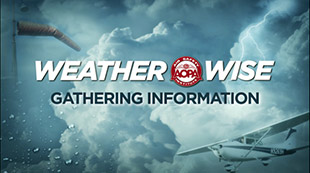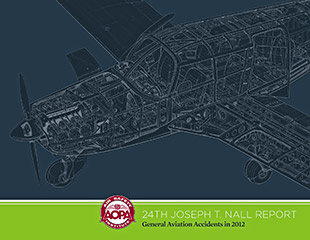 Why a prepurchase inspection is critical
Why a prepurchase inspection is critical
By Adam Meredith, AOPA Aviation Finance
You’re so close to making that airplane your own. You’ve researched for hours, lined up your financing, and even rented a hangar. You’ve flown the aircraft and travelled hundreds of miles to the seller’s airport. You want to take your new baby home—not wait a week or more for an inspection. Plus, you’ve spent enough money as it is. You trust the seller, so maybe it would be safe in this case to forgo an inspection. Right?
Wrong! Skipping a prepurchase inspection could be one of the most costly decisions you’ll ever make. Corrosion could be eating this airplane alive, and once you buy it, it’s your problem—not the seller’s.
So, as anxious as you are to start flying your “new” airplane, you must take the time—and spend the money—to obtain a thorough prepurchase inspection. This will help you make an informed decision about whether this airplane is the right buy at the price you’re paying.
As the buyer, you have the right to have an inspection done. If the seller tries to discourage an inspection or specify who does the inspection, that should be a red flag. Even the seller may not know mechanical problems that have developed since the airplane’s last annual. Use your own mechanic—or one who specializes in the specific make and model—and provide detailed instructions as to what you want.
Your mechanic will start by conducting a thorough examination of the airplane’s paperwork. That includes a valid airworthiness certificate, aircraft registration, pilot’s operating handbook, maintenance logs for the engine and the airframe, and proof of compliance with airworthiness directives. Have this paperwork ready in advance. Reconstructing any of these is costly in both time and money.
Then your mechanic will do a thorough inspection of the airplane. AOPA has prepared a checklist of items that should be examined; share it with your mechanic.
The results of a prepurchase inspection could lower the price of the airplane. If your mechanic finds a problem, the cost of fixing that problem might be deducted from the purchase price. It’s all negotiable. And what if your mechanic gives your new airplane a clean bill of health? Now you have peace of mind that there should be no surprises as you fly and enjoy your new purchase.
Are you considering aircraft ownership? If so, AOPA Aviation Finance wants to make your purchase experience as smooth as possible. For information about aircraft financing, visit the website or call 800-62-PLANE (75263).
SURVEY
56% of AOPA members own an aircraft.
AOPA Foundation
“Safe pilots, safe skies”—Did you know that the AOPA Air Safety Institute’s
programs are funded through donations from pilots who embrace this adage? Show your support.
AOPA Air Safety Institute
Under pressure
Develop your personal minimums
One of the tough issues for general aviation pilots is how to combat self-induced pressure to complete a flight. Sometimes we get lured by being close to our destination, and we’re often motivated by the desire to please passengers.
But pressure can compromise sound decision making, so we should have a personal minimums checklist and identify risks in advance, preparing a contingency plan for each.
First, we’ll have to carefully assess how we are doing. Are we healthy and well-rested? Are any medications we’re taking legal for flight? Are we feeling stress, perhaps due to a major life event? Next, we need to evaluate our aircraft’s condition, the weather, and our route selection.
To help guide pilots, the AOPA Air Safety Institute’s Do The Right Thing: Decision Making for Pilots online course
(www.airsafetyinstitute.org/decision
making) is a great resource with practical advice on how to anticipate and recognize problems—as well as tips for avoiding circumstances that lead to really tough choices.
Next, use ASI’s Flight Risk Evaluator to take a more formal approach in flight planning. Just input the details of the planned flight to get an objective assessment of the risks.
New ASI video—Weather Wise: Gathering Information
 Preflight weather planning is the foundation for some of our most critical decisions as pilots. But with the volume of weather information available, how can we be sure we’re getting what we need?
Preflight weather planning is the foundation for some of our most critical decisions as pilots. But with the volume of weather information available, how can we be sure we’re getting what we need?
The AOPA Air Safety Institute’s Weather Wise: Gathering Information video is the first in a series focused on practical weather flying. You’ll find important information on using aviation weather sources such as Flight Service and CSC DUATS, along with apps and websites that provide aviation-specific weather. ASI also shares strategies to gather important weather information at the right time, using the system that fits your needs. Watch the video before your next planned flight.
ASI seminar: Cross-Country Challenge
Visit the website for dates and locations near you. Icons identify if it’s a fly-in or unique aviation location.
Air Safety Institute releases 24th ‘Nall Report’
 The recently published twenty-fourth Joseph T. Nall Report offers a detailed discussion of the number, type, and circumstances of 2012’s general aviation accidents, including the AOPA Air Safety Institute’s first-ever analysis of helicopter accident causes.
The recently published twenty-fourth Joseph T. Nall Report offers a detailed discussion of the number, type, and circumstances of 2012’s general aviation accidents, including the AOPA Air Safety Institute’s first-ever analysis of helicopter accident causes.
The Nall Report covers airplanes with maximum gross takeoff weights of 12,500 pounds or less and helicopters of all sizes. Accidents on commercial charter, cargo, crop-dusting, and external-load flights are addressed separately from accidents on noncommercial flights, a category that includes personal and business travel and flight instruction, as well as professionally flown corporate transport and positioning legs flown under FAR Part 91 by commercial operators.
The Nall Report is accompanied by the 2013-2014 GA Accident Scorecard, a summary of GA accidents that documents the unexpected improvements in GA safety over the past two years. Download both publications online.
Web: airsafetyinstitute.org/nall
Products and Services
Insurance Services
Get in the game
Your retirement playbook
If you’re planning to retire in the next few years, it’s time to assess your finances—and start planning for your life of leisure. Consider your financials to maintain the lifestyle and activities you have grown accustomed to. Take a few pages from AOPA Insurance’s playbook to get started.
Look at your assets
Take an inventory of your savings—retirement plans, bank accounts, and investments—to determine how much money you’ve accumulated over the years.
Determine how much money you’ll need
See how much money you’ll collect each month from Social Security and your pension, if you have one. Estimate your expenses, and see how much you’ll need to supplement your income. Then take into consideration money you’ll spend on other things—hobbies, entertainment, travel, et cetera. Consider your aircraft storage and maintenance needs, as well as any certificates you want to add or medical certificate renewals. You can use any number of online calculators to get a ballpark estimate. If your savings fall short, increase the amount you save, if possible. Be sure you’re taking full advantage of your retirement plan at work. Speak to a financial advisor or stop by your local bank to ask about other options that may be available to you.
Manage your debt
It’s important to eliminate as much debt as you can, before you stop working. Do what you can to pay down your mortgage. Try to pay off any credit cards and personal loans. Consider, too, any loans you may have co-signed for a child.
Decide how you’ll spend your time in retirement
Getting your finances in order is an important part of retirement planning. Equally important is deciding how you’ll spend your time. If you’d like to volunteer, think about where and how often. Perhaps you’d like to continue working part time. What options are available to you? Is there a hobby you can turn into a small income? If you enjoy playing the piano, for instance, you may enjoy giving music lessons. As an AOPA member, you can help others by assisting with flight planning, pilot certificate preparation, and aviation advocacy issues.
Protect your spouse and family
At retirement, you’ll lose the benefits your employer has provided. That may include life insurance. Most understand the importance of having protection when their families are young, but life insurance can play an important role in retirement as well. The death of one spouse affects the finances of the one left behind. Even though living expenses may remain the same, Social Security and pension payments will decline. Life insurance can help offset the income lost. If you don’t have your own life insurance, it makes sense to purchase this coverage now—if you wait until later and your health changes, you may find it difficult to get or afford life insurance. As an AOPA member, you can expand coverage for your spouse as well through the 50-plus Term Group Life Insurance Plan.
If life insurance is missing from your retirement playbook, take advantage of the options available to you as an AOPA member. AOPA Insurance takes the work out of searching for a trusted insurance partner, and finding coverage that meets your needs and budget.
Many insurance carriers exclude any type of aviation-related accident from their policies, and as an AOPA member you want to be sure you’re covered when you need it most. Learn more about your AOPA life insurance options online.
Answers for pilots
Holiday trips
It doesn’t seem possible that the holidays are, again, right around the corner. But with their inevitable approach comes the opportunity to fly, rather than drive, the family to celebrate with distant relatives and friends.
Flights with family, especially with children, may involve some special planning and flexibility. Feeling the pressure to get there on time, combined with increased noise and distraction in the airplane, can be challenging. Read tips for managing the excitement in this month’s Answers for Pilots .
As always, please contact the aviation technical specialists in AOPA’s Pilot Information Center with your questions, Monday through Friday, 8:30 a.m. to 6 p.m. Eastern Time, at 800-USA-AOPA (872-2672) or by email.


